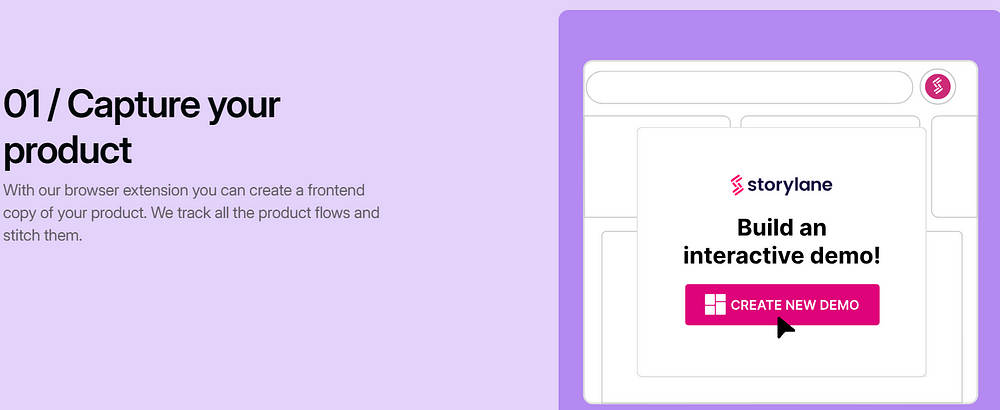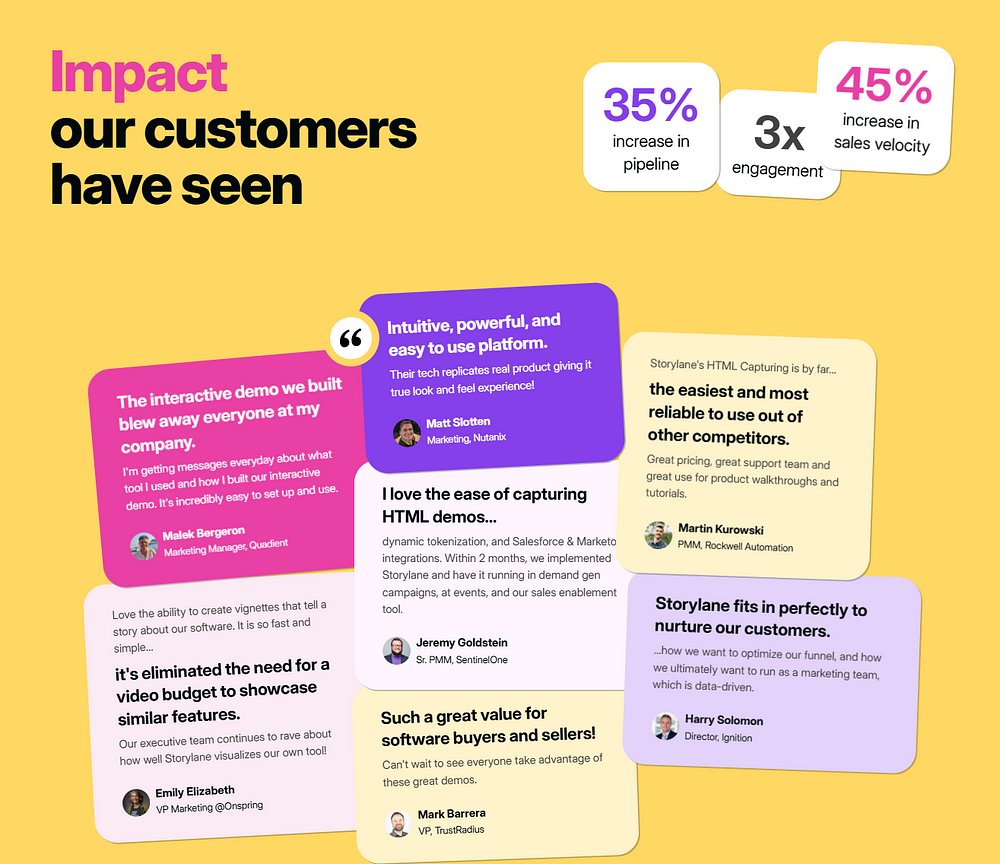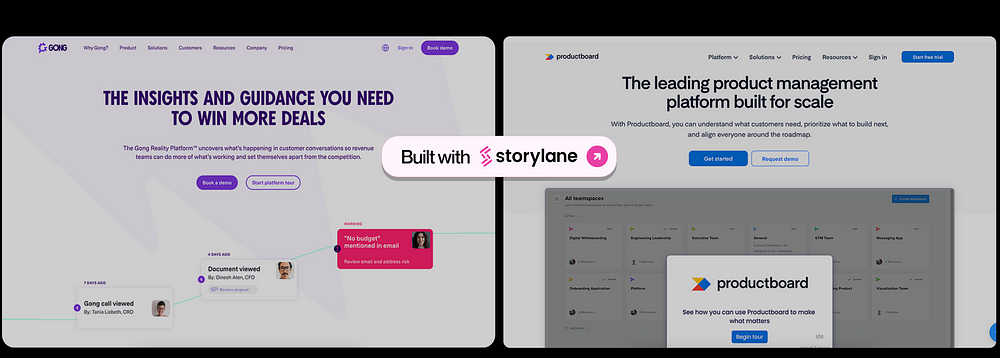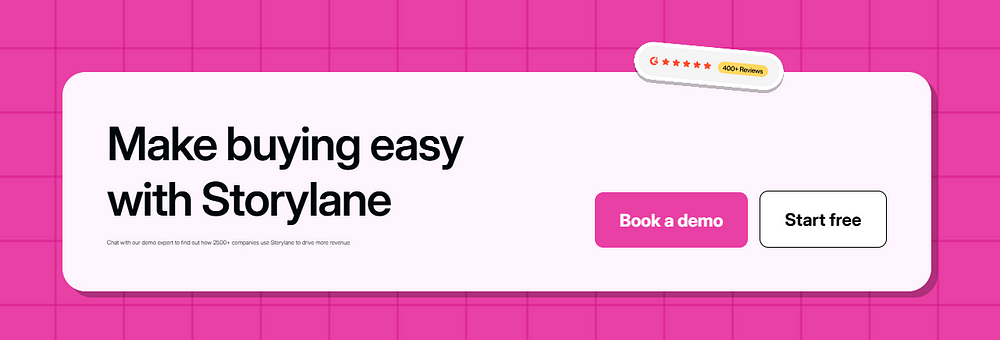Transform Your B2B Sales: The Power of Demo Automation with Storylane. How Demo Automation is Revolutionizing B2B Sales: A Deep Dive into Storylane’s Solution. The landscape of B2B sales is undergoing a dramatic transformation, and at the heart of this evolution lies a powerful innovation: demo automation. Gone are the days when sales teams spent countless hours preparing custom demonstrations, dealing with technical glitches, or struggling to deliver consistent product experiences. Today, you’re witnessing a revolution that’s reshaping how businesses showcase their products and engage with potential customers.

The Demo Automation Revolution
If you’ve ever been involved in B2B sales, you’re likely familiar with the traditional demo challenges. Sales representatives often juggle multiple tasks: maintaining live environments, creating custom scenarios, and ensuring smooth technical execution — all while trying to deliver a compelling pitch. These manual processes not only consume valuable time but also introduce inconsistencies in how your product is presented to different prospects.
Demo automation platforms are changing this narrative. By providing tools that streamline the entire demonstration process, these solutions are helping sales teams focus on what truly matters: building relationships and closing deals. The impact is significant — companies report up to 80% reduction in demo preparation time and substantial improvements in conversion rates.

Understanding Modern Demo Automation
Modern demo automation platforms serve as your virtual demo environment manager, content creator, and analytics engine all rolled into one. These platforms enable you to create interactive, guided experiences that showcase your product’s value proposition effectively. Instead of relying on static screenshots or generic presentations, you can now offer prospects hands-on experiences that demonstrate real-world applications of your solution.
The technology behind these platforms has evolved to support sophisticated features like:
- Dynamic content personalization
- Interactive guided tours
- Real-time analytics and tracking
- Seamless integration with existing sales tools
- Multi-device compatibility

Storylane: A Closer Look
Among the leaders in this space, Storylane stands out with its innovative approach to demo automation. Trusted by over 3,000 sales and marketing teams, including industry giants like McGraw Hill, Palo Alto, and Nasdaq, Storylane has established itself as a go-to solution for modern B2B sales teams.

What sets Storylane apart is its unique combination of simplicity and sophistication. The platform empowers your team to create professional, interactive demos without requiring technical expertise. This democratization of demo creation means that your entire sales team can contribute to the demo process, ensuring consistent quality across all customer interactions.
The Five-Step Demo Creation Process
Storylane’s approach to demo creation is refreshingly straightforward, broken down into five key steps that transform your product showcase into an engaging experience:

1. Interface Capture
Using Storylane’s browser extension, you can easily capture your product’s interface in its actual state. This means no more screenshots or mock-ups — you’re working with real, interactive elements that accurately represent your product.
2. No-Code Editing
The platform’s intuitive editor allows you to customize your demo without writing a single line of code. You can modify text, adjust layouts, and create different scenarios to match your prospect’s specific needs. This flexibility ensures that your demos remain relevant and impactful across different customer segments.
3. Interactive Guide Creation
Adding interactive elements transforms passive viewing into an engaging experience. You can create guided tours that highlight key features, insert call-to-action buttons, and design custom paths based on user interests. These interactive elements help prospects discover your product’s value on their own terms.
4. Publishing and Sharing
Once your demo is ready, sharing it is as simple as generating a link. These demos can be embedded in your website, shared via email, or integrated into your sales collateral. The platform ensures consistent performance across different devices and browsers, eliminating technical barriers that might prevent prospects from engaging with your demo.
5. Analytics and Insights
Perhaps most importantly, Storylane provides detailed analytics about how prospects interact with your demos. You can track engagement metrics, identify drop-off points, and gather insights that help optimize your demo strategy over time.

Integration Ecosystem
In today’s interconnected business environment, the ability to integrate with existing tools is crucial. Storylane shines in this aspect, offering seamless integration with popular platforms including:
- Salesforce for CRM synchronization
- HubSpot for marketing automation
- Slack for team collaboration
- Zapier for custom workflow automation
- Google Analytics (GA4) for comprehensive tracking
- Microsoft Clarity for user behavior analysis
These integrations enable you to create a unified sales and marketing stack that maximizes the impact of your demo automation efforts. For instance, you can automatically trigger follow-up actions based on demo engagement or enrich your CRM data with prospect interaction metrics.

Measuring Success
The true value of demo automation becomes apparent when you examine its impact on key performance indicators. With Storylane, you can track metrics such as:
- Demo completion rates
- Feature engagement levels
- Time spent on specific sections
- Conversion rates from demo to sale
- Sales cycle duration
These metrics provide actionable insights that help you refine your demo strategy and improve your sales process. Teams using demo automation often report:
- 40% reduction in sales cycle length
- 60% increase in demo-to-meeting conversion rates
- 30% improvement in close rates

Implementation Strategy
To maximize the benefits of demo automation, consider the following best practices:
Getting Started
- Begin with your most common use cases
- Create a library of reusable demo components
- Train your team on the platform’s capabilities
- Establish clear guidelines for demo customization
Best Practices
- Maintain consistent branding across demos
- Regular updates to reflect product changes
- Create persona-specific demo paths
- Integrate analytics into your sales reporting
Common Pitfalls to Avoid
- Overcomplicating demos with too many features
- Neglecting to personalize content for different audiences
- Failing to track and analyze demo performance
- Not maintaining demo content regularly

Future of Demo Automation
The demo automation landscape continues to evolve, with emerging trends pointing toward even more sophisticated capabilities:
- AI-driven personalization
- Virtual reality demos
- Advanced behavioral analytics
- Predictive engagement scoring
- Enhanced integration capabilities
As businesses increasingly recognize the value of efficient, scalable demo processes, platforms like Storylane will play an even more crucial role in B2B sales success. The future promises more innovative features that will further streamline the demo creation process and enhance the prospect experience.
Conclusion
Demo automation is more than just a trend — it’s a fundamental shift in how B2B companies approach product demonstrations. By embracing platforms like Storylane, you’re not just upgrading your demo capabilities; you’re transforming your entire sales process. The combination of easy-to-use tools, powerful analytics, and seamless integrations makes it possible to deliver consistent, engaging demos that drive results.


